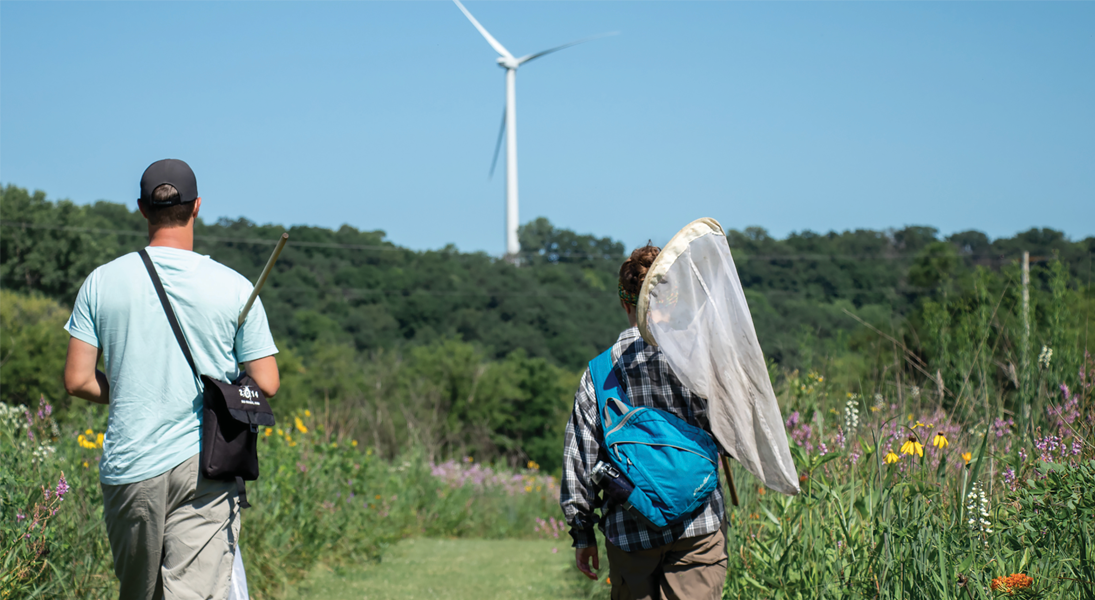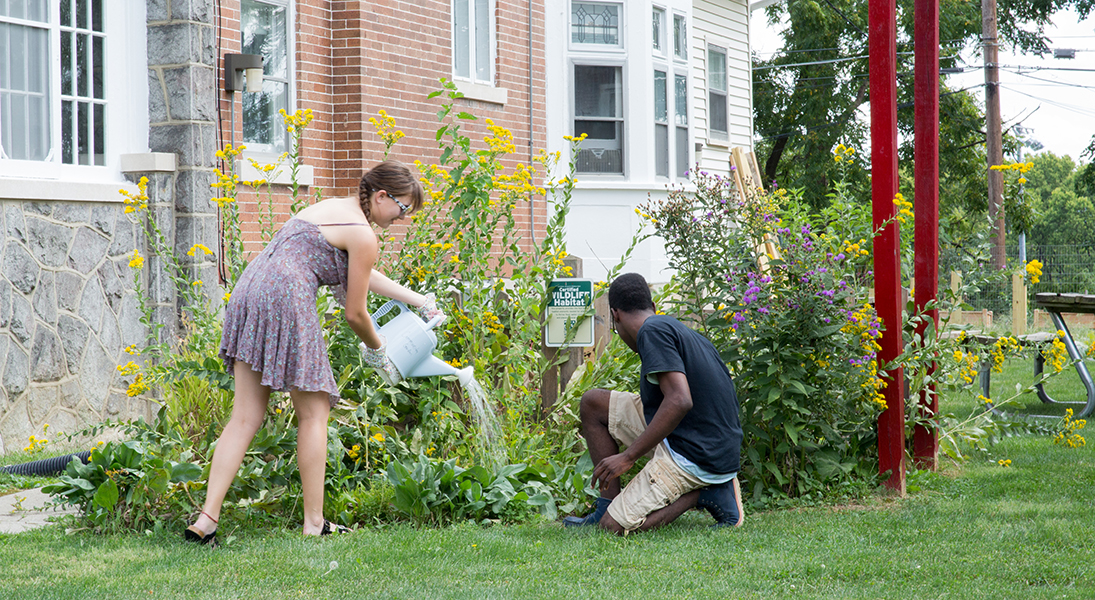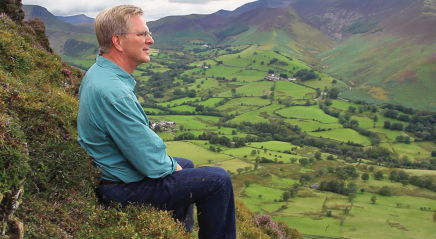Like so many other ministry concerns of the ELCA, care for creation has been dealt a blow by COVID-19. Images of clearing skies over the world’s cities have awakened people to the possibility of the planet healing, but these gains will vanish as economies get back to business.
New workplace guidelines from the Centers for Disease Control and Prevention recommend plastic water bottles over drinking fountains and single-occupant car travel over public transportation. And the canvas tote bag—the nationwide ambassador for sustainable living—is no longer welcome at many grocery stores. Advocates have no choice but to regroup, strategize and attack the problem anew.
“Sustainability is about reality,” said Jim Martin-Schramm, professor of religion and the sustainability coordinator at Luther College in Decorah, Iowa. “You can’t just wish something away—you have to face facts.”
Luther was one of five ELCA colleges and universities recognized for their sustainability efforts in the most recent index of the Association for the Advancement of Sustainability in Higher Education (AASHE), along with Concordia College in Moorhead, Minn.; Gettysburg (Pa.) College; Muhlenberg College in Allentown, Pa.; and Susquehanna University in Selinsgrove, Pa.
The annual index ranks schools’ environmental impact across 17 categories ranging from campus operations to academics to administration. Luther earned a gold rating and ranked ninth overall for baccalaureate institutions.
Martin-Schramm credits the school’s success to “a whole institution that understands the wisdom” as opposed to a “greener than thou” minority. In 2006 he learned that Richard Torgerson, now retired as president of Luther, wanted to sign the American College and University Presidents’ Climate Commitment, which called for a voluntary 100% reduction in carbon emissions by 2030.
Martin-Schramm said he’d been trying to persuade Torgerson to sign a 6% carbon-reduction agreement based in Chicago but it hadn’t gotten anywhere because the board of regents wasn’t interested in something that was legally binding. By contrast, the presidents’ commitment was voluntary, yet Luther proceeded to cut its carbon footprint by 60%.
“In retrospect,” he said, “what we’ve all come to realize is that we are a lot further down the road in terms of cutting our carbon footprint because we took on a morally aspirational goal [rather] than a legally binding commitment.”
Cutting carbon footprints
Torgerson’s pledge coincided with the launching of a strategic plan for the college, and incorporating sustainability efforts into its comprehensive business development has allowed Luther to dream big.
On the north edge of campus, the student housing complex Baker Village provides power for 112 seniors (and their phones) by way of a 280-kilowatt solar array. The complex’s common building and townhouses are heated and cooled by geothermal energy, and residents can access a website called Energy Genius to monitor their individual energy consumption.
On a bluff west of the campus, the college’s wind turbine generates 3.6 million kilowatt hours annually, about 27% of Luther’s power consumption, and has reduced the school’s carbon footprint by about 10%. A for-profit corporation, the Luther College Wind Energy Project, was founded to complete the $3.2 million project.
“Luther has done more in terms of actually affecting the infrastructure of the college than probably any of our campuses,” said Mark Wilhelm, executive director of the Network of ELCA Colleges and Universities. “Others have done it through building construction and following sustainability standards and the like, but I don’t know that any of the campuses have quite incorporated it as extensively as Luther.”
AASHE awarded another gold rating to Muhlenberg, which scored high for water conservation and rainwater management. Kalyna Procyk, the college’s sustainability coordinator, said the school had already upgraded the plumbing in campus buildings with low-flow toilets, faucets and showers when, about five years ago, it took a hard look at the welter of water hoses supporting its extensive, beautifully landscaped College Green.
Working closely with the director of grounds, an experienced landscaper, the school developed a policy that favored plants needing less water and grass that would tolerate different water cycles and thrive without herbicides or pesticides. The grounds crew installed self-watering planters, which capture rainfall and can feed it to plants for weeks afterward.
Another dramatic decrease in water use came at the campus steam plant, where a new organic additive allowed the area’s hard water to be reused many more times without causing mineral buildup in the system.
Procyk is most proud of Muhlenberg’s recently announced partnership with three area schools (Lehigh University, Lafayette College and Dickinson College) to collectively purchase renewable energy from a solar farm being constructed in Texas. The 15-year agreement, to commence in two years, not only enables the schools to prevent more than 70,000 metric tons of carbon emissions annually (like taking 15,000 cars off the road) but will provide them with internship opportunities and research data.
Because the solar energy is used where it’s produced and the schools are reimbursed in renewable energy credits, they thought long and hard about where to site the farm. “The mid-Atlantic grid was actually a less carbon-intensive grid, so if we sited the project there, we would be taking less dirty energy off the grid,” Procyk said. “Siting it in Texas, which has a very fossil fuel–intensive grid, we would be able to take more fossil fuels out of that grid.”
Telling the truth
Pacific Lutheran Theological Seminary (PLTS) in Berkeley, Calif., has just established a concentration in climate justice and faith, with courses available at PLTS, Graduate Theological Union and the University of California at Berkeley. In the 2021-22 academic year, PLTS intends to debut a master’s degree in spirituality and social change for students seeking ordination as deacons or those preparing to serve the world in other ways. The concentration is open to all Master of Divinity students and to those in the new master’s degree.
Cynthia Moe-Lobeda, professor of theological and social ethics at PLTS, said she hopes the program will produce leaders who can rally their congregations to the challenge of climate change, especially as it intersects with gender, racial and economic injustice. She said her first students in the new concentration were “surprised by the tremendous resource that Lutheran theology can provide for the work of climate justice grounded in Christian faith. Also, they seem delighted and hungry to learn about practical ways of working for structural change, for social change, and then linking that intimately to the gospel.”
That sort of grounding will be critical to anyone passionate about climate change who answers a call in a community daunted by the challenge at hand. “One approach is to start with how the climate crisis will impact the lives of people in that community or [other people whom] they love,” she said.
“Another is to look at what it means to love our neighbor as ourselves, which is so central to Luther’s theology, when so many neighbors are being devastated by climate change.”
For Wilhelm, preaching stewardship of the earth is—like sustainability—a matter of facing facts: “The key in any ministry is telling the truth. If the sea levels rise as they are predicted to rise, we will be facing increasingly complex issues around this matter. What will pastors in Miami do when it’s time to relocate Miami, if that in fact comes to happen?”
As the pandemic has proved, the future can arrive sooner than anyone expected.










